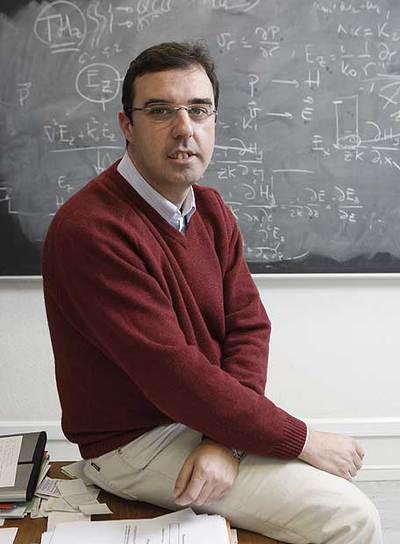A theoretical prediction by nanoGUNE's director, J. M. Pitarke, in collaboration with F. J. Garcia-Vidal and J. Pendry leads to the darkest material
In a recent letter published by the Journal Nano Letters it is reported the experimental observation of an extremely dark material made by a low-density nanotube array (read the abstract here).

In 1997, F. J Garcia-Vidal, J. M. Pitarke (now director of nanoGUNE) and J. B. Pendry published a theoretical study of the optical properties of aligned carbon nanotubes showing that a low-density vertically aligned carbon nanotube array could have an extremely low index of refraction. Now, researchers from the Rensselaer Polytechnic Institute (Troy, New York) have been able to fabricate an measure such a structure. The material, a thin coating comprised of low-density arrays of loosely vertically-aligned carbon nanotubes, showed a total reflective index of 0.045 percent — more than three times darker than the previous record, which used a film deposition of nickel-phosphorous alloy. The material absorbs more than 99.9 percent of light and one day could be used to boost the effectiveness and efficiency of solar energy conversion, infrared sensors, and other devices. The researchers who developed the material have applied for a Guinness World Record for their efforts.
Read the interview to F. J. García-Vidal in El Pais
Read this story in the BBC
